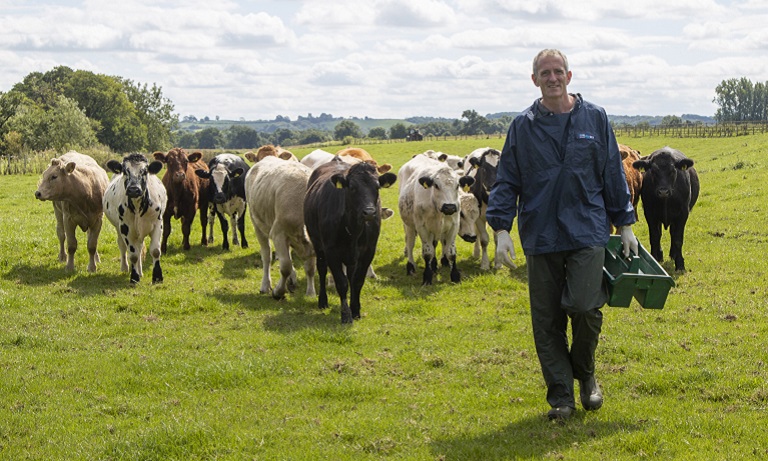Brucella canis: what vets need to know
14 Feb 2024
23 Feb 2022 | James Russell
This week, Defra Secretary of State George Eustice announced the next steps in the Animal Health and Welfare Pathway in a speech to the NFU conference. BVA Senior Vice President James Russell has been involved in shaping the plans for the Pathway and sets out what vets need to know now, ahead of roll out later this year.

We’ve been talking about the upcoming Animal Health and Welfare Pathway for a while now, and yesterday George Eustice announced to the NFU conference that farmers in England will get “an annual vet visit to develop better animal health plans, [that] will see both animal welfare and their farm profitability improve.” This is one part of the changes to public funding for farming post-Brexit.
Like many major projects, the planned “Spring” launch, which has previously been highlighted as 1 April, has slipped a bit. But behind the scenes Defra, industry, and the veterinary profession have been working hard to develop plans that will utilise veterinary expertise in adding value to dairy, beef, sheep, and pig farms across the country.
In January Defra delivered a webinar for vets outlining the background and wider context for the Pathway, how the plans have been shaped so far, and the process for how the annual vet visits should work. The webinar recording is about an hour long and well worth watching, but I know how short of time everyone is at the moment, so I wanted to summarise what I think the key takeaways are from the webinar.
You can access the webinar recording here using the passcode: t744B6Z!
The Pathway fits into the broader landscape of post-Brexit changes to farm funding. Instead of direct payments based on land area, farmers will be asked to demonstrate the ‘public good’ they are achieving, in return for public funds. (I’m proud that BVA previously won the argument that animal health and welfare should be considered public goods in this context.)
The Pathway will support a number of objectives. It will aid us in achieving net zero carbon emissions through improving biosecurity, productivity, and sustainability. It will also promote responsible antimicrobial and anthelmintic usage. All of this is underpinned by a philosophy of empowering farmers and their vets to make decisions on what is right for their farm.
The key touchpoint for our profession will be the annual health and welfare review, sometimes referred to as the vet visit. During this visit we’ll collect baseline data, some of which will be fed back to Defra to demonstrate uptake of the scheme (including numbers of stock, types of stock, and so on).
The information we gather about the health and welfare on the farm, the results of endemic disease testing, and the goals that we develop with our farmer will remain confidential, just as any other clinical notes do. Registering the farm onto the e-medicines hub will also be a voluntary year 1 goal.
The way we record this visit will evolve. It may start off quite low key, as approaches are piloted, and lessons learned. The ultimate goal is a tablet-based app which will enable the farmer and vet to record pertinent information. In the meantime, vets will receive some training from Defra and the relevant species divisions to bring us all to a level of feeling comfortable delivering a health and welfare visit to whichever species we are asked to.
The difference that this process will make to the relationship we have, particularly on farms who have not historically engaged in proactive veterinary medicine, is hard to overstate. We can visit a different cohort of farmers, supported by public funding, in order to engage in open and honest conversations about the challenges and opportunities on that farm. For me, this is a real win for animal health and welfare, locally on that farm, and more broadly as we drive down the disease pressures by working closely with a broader reach of farmers.
Some of the details are still being worked out – and we’ll provide more information as we get it – but in the meantime here are a few key headlines from the webinar:
Whilst we don’t have all the detail yet, we do know a lot about what’s coming, and we do know that there’s a great opportunity for our profession to play its part in improving animal health and welfare across these species.
The plan is for a fairly soft roll out in year one and your feedback as it progresses will be crucial in helping to shape the Pathway for the future. Look out for more detail and opportunities for training from Defra, BVA, and the specialist divisions, and discuss with your teams how to start having the conversations with your farm clients.
Get tailored news in your inbox and online, plus access to our journals, resources and support services, join the BVA.
Join Us Today